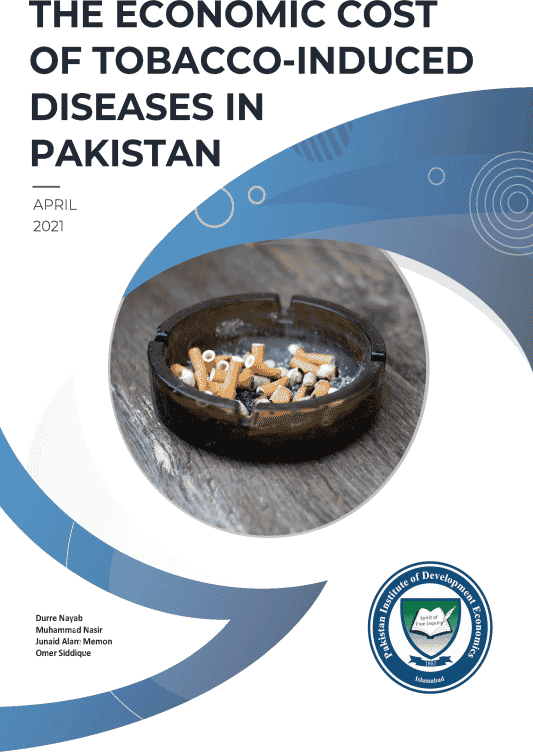
Pakistan Institute of Development Economics
- Home
Our Portals
MenuMenuMenuMenuMenuMenuMenu - ResearchMenuMenuMenuMenuMenuMenuMenu
- Discourse
- The PDR
- Our Researchers
- Academics
- Degree Verification
- Thesis Portal
- Our Portals
The Economic Cost of Tobacco-Induced Diseases in Pakistan
The success of the tobacco industry hinges on the ignorance of real economics at work behind the scenes. Though tobacco use is associated with many adverse health effects (Saha et al., 2007), increased health costs (John et al., 2020; Sung et al., 2006), and overburdened health systems (Amin et al., 2017), the tax revenues it generates often encourage policy inertia in poor economies such as Pakistan. As a country of 24 million active tobacco users, Pakistan stands as the one of the world’s top tobacco-consuming countries. Although 86 percent of its adult population know that tobacco use damages human health (GATS, 2014), some 45 percent households report tobacco use. Smoking prevalence varies across gender (male 32.4 percent, female 5.7 percent), region (rural 13.9 percent, urban ten percent), and age group (adults 19.1 percent, adolescents 6–14 percent). This situation requires the government to make corrective policies to nudge public behavior in the greater interest of society. One way to alter public behavior is through taxation policies. Increasing tobacco taxes has been found to reduce tobacco consumption, including in Pakistan (Nayab et al., 2018). Despite empirical evidence that tax policy is effective in reducing tobacco consumption and improving public health outcomes, the country’s taxation policy is among the weakest action areas in its fight against tobacco.



